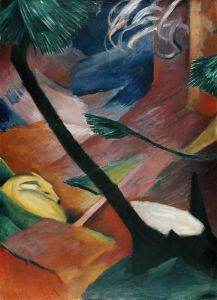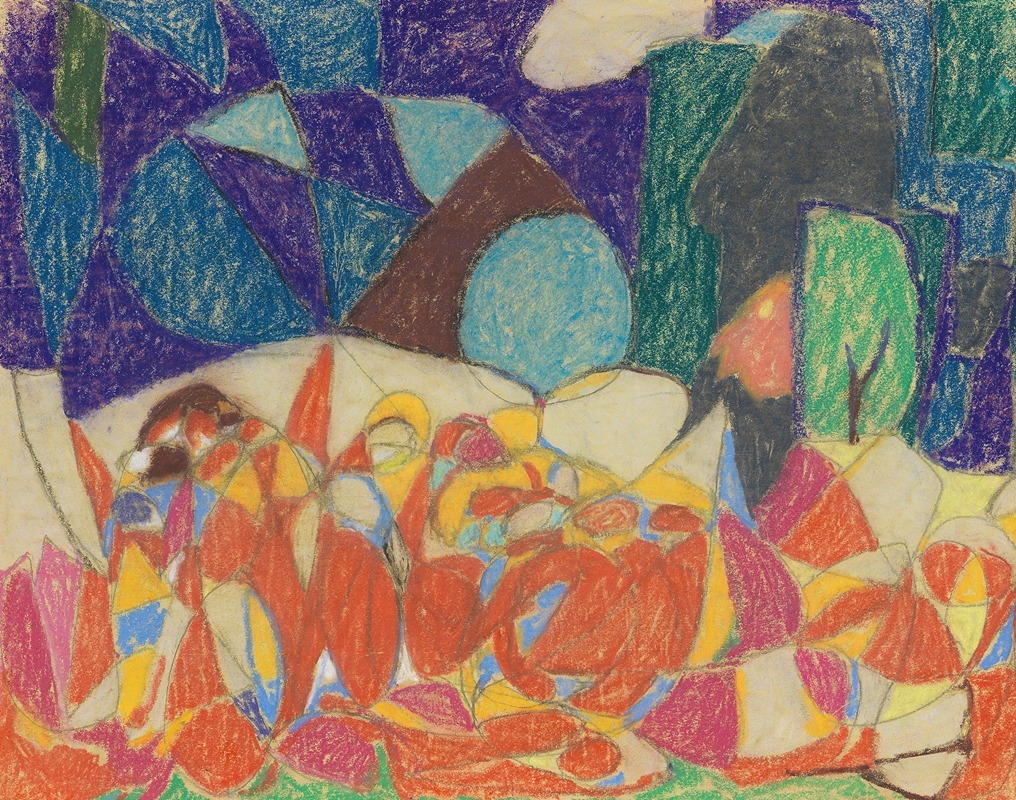
Figurengruppe unter lila-grünen Formen
A hand-painted replica of Adolf Hölzel’s masterpiece Figurengruppe unter lila-grünen Formen, meticulously crafted by professional artists to capture the true essence of the original. Each piece is created with museum-quality canvas and rare mineral pigments, carefully painted by experienced artists with delicate brushstrokes and rich, layered colors to perfectly recreate the texture of the original artwork. Unlike machine-printed reproductions, this hand-painted version brings the painting to life, infused with the artist’s emotions and skill in every stroke. Whether for personal collection or home decoration, it instantly elevates the artistic atmosphere of any space.
Adolf Hölzel was a prominent German painter and art theorist, known for his significant contributions to modern art and his role in the development of abstract art in the early 20th century. One of his notable works is "Figurengruppe unter lila-grünen Formen," which translates to "Figure Group under Purple-Green Forms." This painting exemplifies Hölzel's innovative approach to composition and color theory, which were central to his artistic philosophy.
Born in 1853 in Olomouc, Moravia, Hölzel studied at the Academy of Fine Arts in Vienna and later at the Academy of Fine Arts in Munich. His early works were influenced by Impressionism, but he gradually moved towards a more abstract style. Hölzel was a pivotal figure in the transition from Impressionism to Modernism in Germany. He became a professor at the Stuttgart Academy of Fine Arts in 1905, where he influenced a generation of artists, including notable figures such as Oskar Schlemmer and Johannes Itten.
"Figurengruppe unter lila-grünen Formen" is a testament to Hölzel's exploration of color and form. The painting features a group of figures set against a backdrop of abstract shapes in purple and green hues. This work reflects Hölzel's interest in the spiritual and emotional power of color, a concept he believed could transcend the literal representation of objects. His use of color was not merely decorative but was intended to evoke a deeper, more intuitive response from the viewer.
Hölzel's theoretical contributions to art were as significant as his paintings. He developed the "Hölzel Circle," a color theory that emphasized the harmony and contrast of colors. This theory was influential in the development of abstract art and was adopted by many of his students. Hölzel believed that color and form could convey meaning and emotion independently of representational content, a revolutionary idea at the time.
Throughout his career, Hölzel participated in various exhibitions and was associated with several art movements, including the Berlin Secession and the Munich Secession. His work was well-received, and he was regarded as a leading figure in the avant-garde art scene in Germany. Despite the challenges posed by the political climate of the time, Hölzel continued to innovate and inspire others through his teaching and artistic practice.
"Figurengruppe unter lila-grünen Formen" is an example of Hölzel's mature style, where he successfully integrates his theoretical ideas with his artistic practice. The painting's abstract forms and vibrant colors invite viewers to engage with the work on a sensory and emotional level, demonstrating Hölzel's belief in the transformative power of art.
Adolf Hölzel passed away in 1934, but his legacy lives on through his contributions to modern art and his influence on future generations of artists. His work, including "Figurengruppe unter lila-grünen Formen," continues to be studied and appreciated for its innovative approach to color and abstraction.






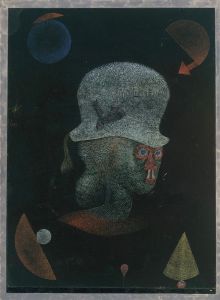
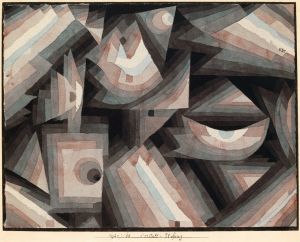
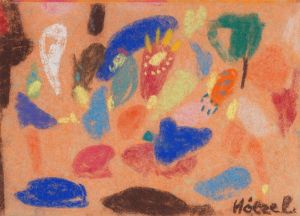
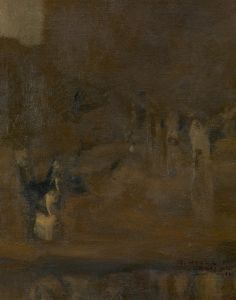
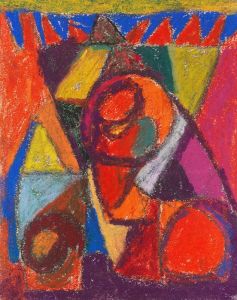
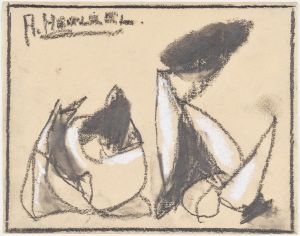

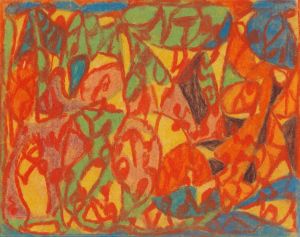
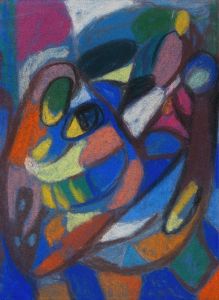
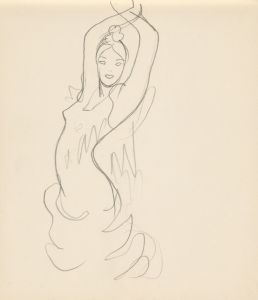
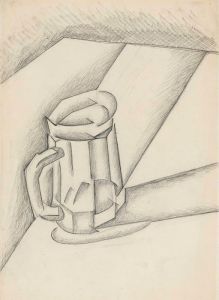
![Graphic design of nude female.] [Cubist composition drawing](/imgs/249427/s/winold-reiss-graphic-design-of-nude-female-cubist-composition-drawing-b6f17b02.jpg)
